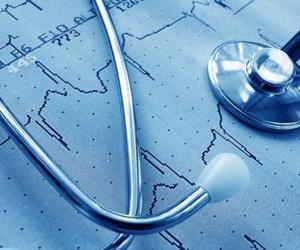Anemia Symptoms
Symptoms of anemia are caused by low levels of red blood cells (RBCs) in the body.

What is anemia?
Anemia occurs when there are low levels of red blood cells (RBCs) in the body. Red blood cells are the ones that carry oxygen all over the body. So when a person's RBC count is lower than normal, it means that there is not enough oxygen in the blood, causing symptoms of anemia, such as feeling weak and tired.
Anemia has many causes and forms. The condition can also be acute or chronic and can be mild to severe. Moreover, anemia can also be a sign of a serious underlying condition, which needs to be evaluated by a doctor.
Blood tests can determine if you have anemia, what type of anemia you have, and the cause of anemia. When anemia is suspected, the level of hemoglobin in the blood is measured. Hemoglobin is a protein found in RBCs that carries oxygen from the lungs to the tissues of the body. If the body does not have sufficient levels of hemoglobin, the functions of the muscles and tissues of the body will be impaired due to low oxygen levels. People who have chronic diseases, especially women, are more prone to developing anemia.
Over-the-counter iron supplements, vitamins, medications, and intravenous iron therapy may be recommended by your doctor if you have mild to moderate anemia. However, severe anemia requires red blood cell transfusions. The most common type of anemia in the world is iron-deficiency anemia, which can be due to inflammatory bowel disease (IBD), pregnancy, blood loss through internal bleeding or heavy menstrual periods, and an inadequate intake of iron due to restrictive or poor diets.
Symptoms of Anemia
1. Feeling unusually tired
People with anemia tend to always feel tired than those who do not have anemia (1). When there is not enough hemoglobin in the body, the body's muscles and tissues will have less oxygen, which will deprive them of the energy they need. Moreover, the heart works harder to compensate for this deficiency by moving more oxygen-rich blood all throughout the body. This will you feel unusually tired.
However, it is hard to diagnose anemia through this symptom alone because tiredness, these days, has already become a normal part of modern, busy lifestyles. Aside from being always tired, other symptoms of anemia include poor productivity at work, low energy with body weakness, and irritability.
2. Feeling dizzy with headaches
Other symptoms of anemia are dizziness and headaches (2). Headaches are usually coupled with dizziness or feeling lightheaded but may seem to be a less common symptom of iron-deficiency anemia.
When there is an insufficient level of oxygen in the brain, the blood vessels in the brain tend to swell and cause pressure, which then leads to headaches (3). Recurrent or frequent headaches along with dizziness may indicate iron deficiency anemia.
3. Pallor or paleness
Moderate to severe anemia can cause paleness. One of the most common signs of anemia is a pale complexion (4). People with anemia may also have a pale conjunctiva (5). Low levels of hemoglobin in the blood can make the blood less red because hemoglobin gives the red color of RBCs. For this reason, people tend to lose the rosy and healthy color of their skin if they have anemia.
Aside from pale skin, people with anemia can also have pale nails, gum, face, and conjunctiva. Although these signs are often associated with anemia, the condition should still be confirmed by undergoing blood tests.
4. Shortness of breath
Low hemoglobin levels in iron deficiency anemia also mean that there are low levels of oxygen in the body, depriving your muscles and tissues with enough oxygen they need. For some people, doing normal daily activities, such as walking, can be a struggle because of anemia. As the body tries to get more oxygen, a person's breathing rate also increases, which is why shortness of breath is another common symptom of anemia.
Being iron-deficient could be to blame if you regularly find yourself out of breath while doing simple daily tasks, such as working out, climbing stairs, and walking. Correcting anemia and replenishing iron stores tend to lessen the severity of these problems.
5. Skin and hair damage
When the body is iron-deficient, the body gives more of the oxygen to different tissues and organs of the body, which perform vital functions. This is the reason why the skin and hair of a person with iron deficiency can easily get damaged. The skin and hair tend to become weak and dry when they are oxygen-deprived.
People with a severe case of iron deficiency are even more prone to hair loss (6). Hair fall is completely normal when it comes to everyday brushing and washing. However, when clumps of your hair fall more than usual, it could be a sign of an iron deficiency.
6. Restless legs syndrome (RLS)
Restless legs syndrome (RLS) may be a result of having low levels of iron in the blood (7). Restless leg syndrome is characterized by a strong and unpleasant urge to move your legs when at rest. Other sensations in the legs and feet, such as itchy and strange crawling sensations may also be experienced by people who have RLS.
People with RLS may become sleep-deprived because the disorder is usually worse at night. Although the exact cause of RLS is still not completely understood, a randomized controlled trial shows that up to 25 percent of people with RLS are thought to be iron-deficient. Moreover, the symptoms tend to get worse when iron levels are lower (8).
7. Heart palpitations
Heart palpitations are noticeable heartbeats, which can be one of the symptoms of anemia. The heart works harder when the body is iron-deficient to be able to carry oxygen and transport it all over the body. When this happens, you may notice that your heart is beating faster than normal. Having irregular heartbeats can also lead to more serious conditions, such as heart failure, an enlarged heart, or heart murmur. However, you may only experience these symptoms if you have a chronic iron deficiency.
Other common signs and symptoms of anemia may include:
- Cold hands and feet
- Anxiety
- Unusual food cravings
- Increased risk of infections
References
1. Bager P. Fatigue and acute/chronic anaemia. Dan Med J. (2014)
2. Vuković-Cvetković V., et. al. Is iron deficiency anemia related to menstrual migraine? Post hoc analysis of an observational study evaluating clinical characteristics of patients with menstrual migraine. Acta Clin Croat. (2010)
3. Markey KA., et. al. Understanding idiopathic intracranial hypertension: mechanisms, management, and future directions. Lancet Neurol. (2016)
4. Kalantri A., et. al. Accuracy and reliability of pallor for detecting anaemia: a hospital-based diagnostic accuracy study. PLoS One. (2010)
5. Sheth T., et. al. The Relation of Conjunctival Pallor to the Presence of Anemia. J Gen Intern Med. (1997)
6. Trost LB., et. al. The diagnosis and treatment of iron deficiency and its potential relationship to hair loss. J Am Acad Dermatol. (2006)
7. Connor JR., et. al. Neuropathological examination suggests impaired brain iron acquisition in restless legs syndrome. Neurology. (2003)
8. Wang J., et. al. Efficacy of oral iron in patients with restless legs syndrome and a low-normal ferritin: A randomized, double-blind, placebo-controlled study. Sleep Med. (2009)













